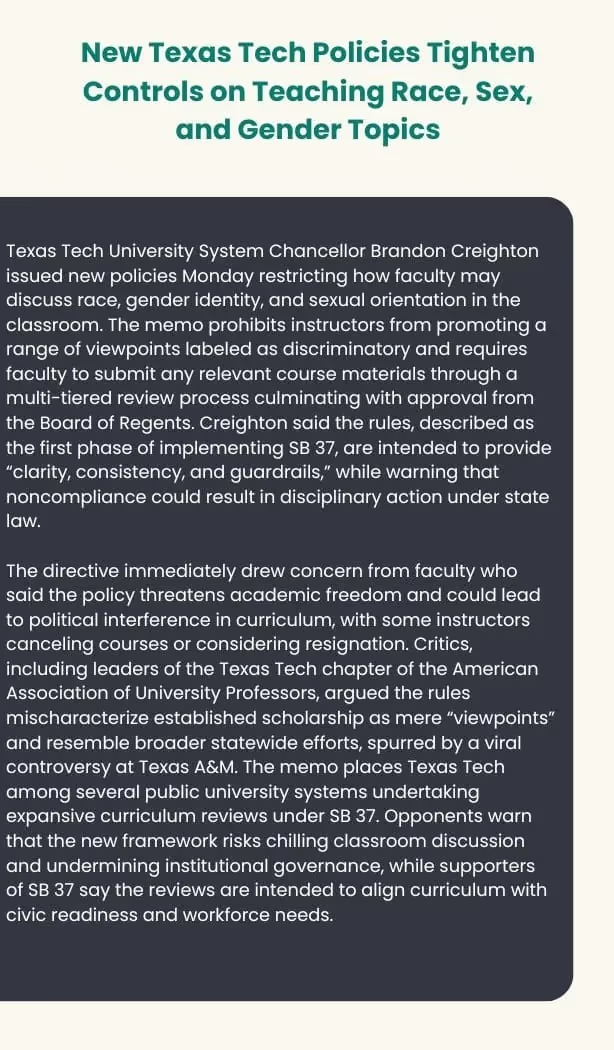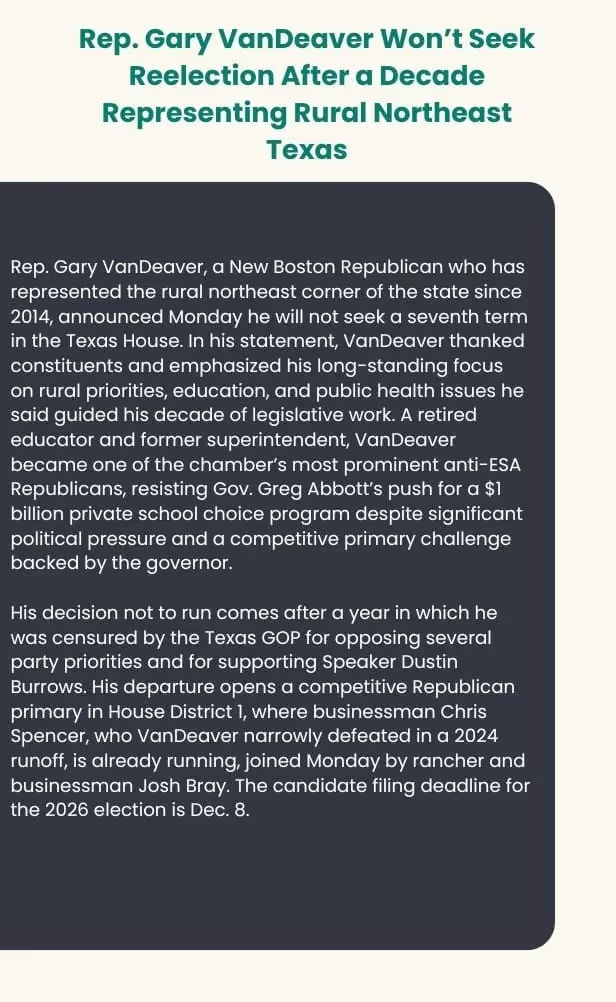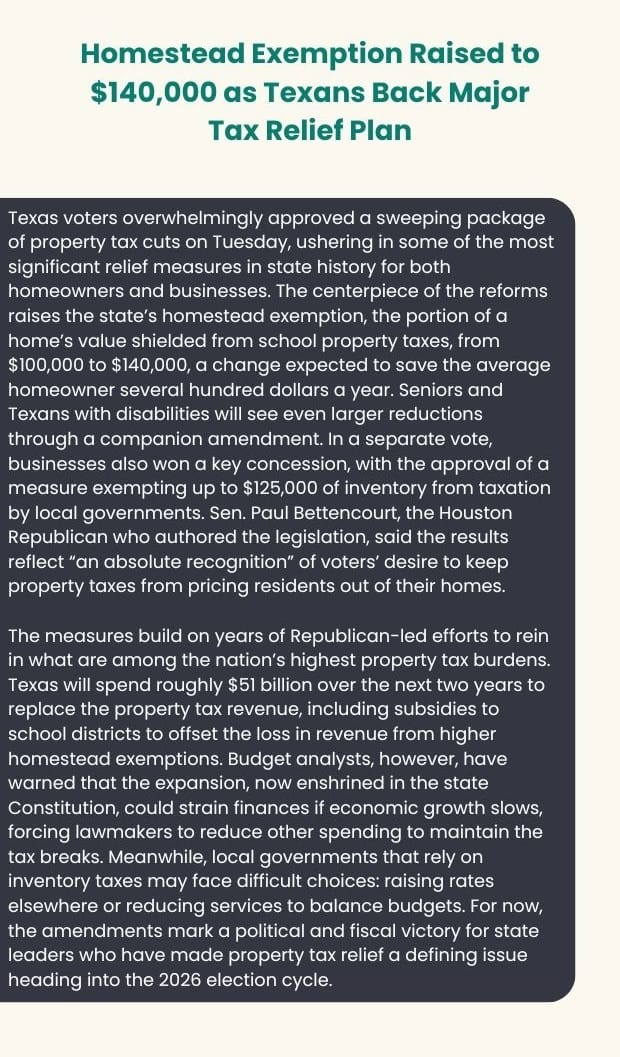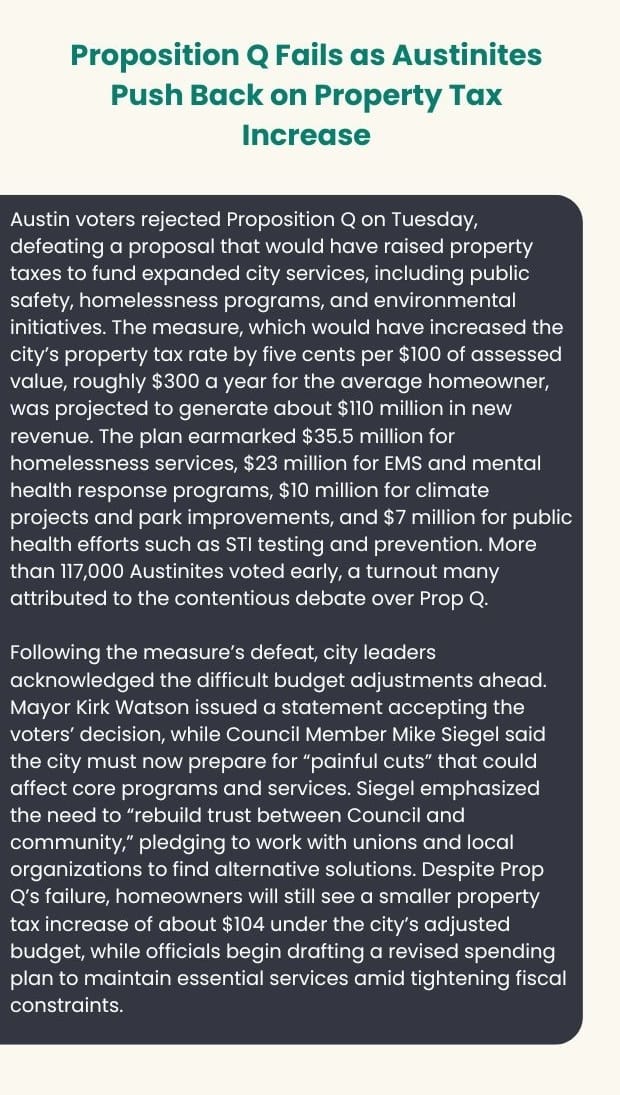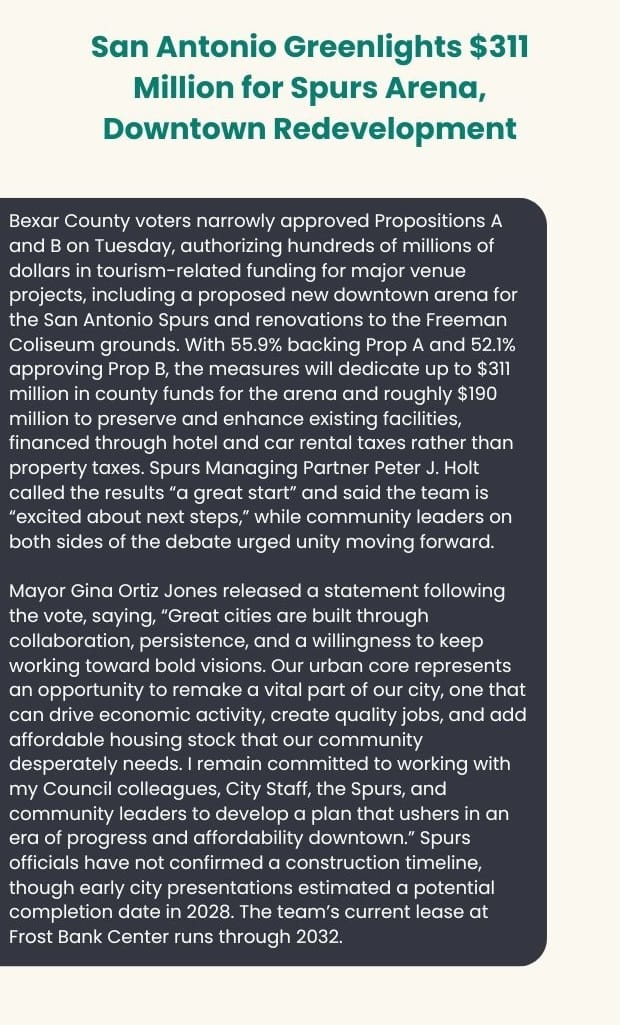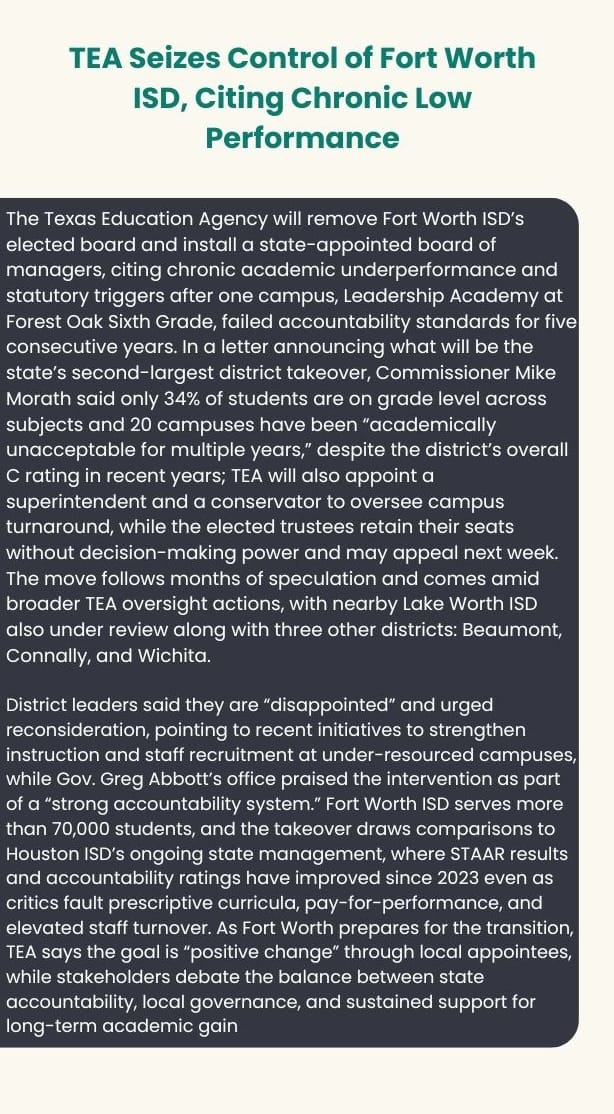83%
Winning percentage of runoff candidates who finished 10% or more ahead of their challenger in the primary election since 2002.
There have been 204 “open” primary runoff elections for state, legislative and federal offices since 2002, and the candidate who finished first in the primary election has won 60% of them. “Open” runoffs do not have an incumbent on the ballot, though the “open” runoff winner might ultimately face an incumbent.
As we have before, we looked at the winning percentages of first-place candidates based on whether they received more or less than 40% of the vote in their respective primaries and whether they finished more or less than 10% ahead of the second-place candidate. As they did in 2018, the 2020 runoff results tracked very closely with the historical averages.
Since 2002, first-place candidates won:
- 80.4% of runoffs after receiving at least 40% of the vote with a margin of at least 10% over the second-place candidate
- 85.7% of runoffs after receiving less than 40% of the vote with a margin of at least 10%
- 52.4% of runoffs after receiving at least 40% of the vote with a margin of less than 10%; and
- 43.5% of runoffs after receiving less than 40% of the vote with a margin of less than 10%.
For the first three groups above, there isn’t much difference between the Republican and Democratic runoffs. But there’s something particularly interesting about the fourth group.
Democratic candidates receiving less than 40% of the vote and finishing first by less than 10% of the vote have won 62% of their runoff races. Similarly situated Republicans have won only 34% of the time, a difference of 28 percentage points.
The differing fortunes of the parties’ candidates in that fourth group largely defines the difference between the two parties’ success rates generally. Since 2002, 55% of first-place Republicans have won runoffs compared to 68% of first-place Democrats. Excluding runoffs for which first-place candidates received less than 40% of the vote with a smaller than 10-point margin, the historical winning percentages of Republicans (71%) and Democrats (72%) are nearly identical.
Regardless of party, first-place candidates’ historical success rates increase as their plurality rises:
- 74% of candidates receiving at least 45% of the vote prevailed
- 64% of those receiving 40%-45%
- 56% of those receiving 35%-40%
- 48% of those receiving 30%-35%; and
- 48% of those receiving less than 30% of the primary vote.
The same applies to their margin over the second-place candidate:
- 90% of candidates finishing more than 20 points ahead of their rival prevailed
- 79% of those finishing 15-20 points ahead
- 79% of those finishing 10-15 points ahead
- 46% of those finishing 5-10 points ahead; and
- 46% of those finishing less than 5 points ahead in the primary.
Of those who finished less than 5 points ahead of their rivals, 60% of Democrats prevailed compared to 39% of Republicans.
All of the preceding figures are for open-seat races – in other words, no incumbents. We’ll get to incumbents in a future installment. Suffice it to say, they have not fared as well as similarly situated open-seat candidates.
2022 Open-seat Runoffs
We are nine weeks away from runoff election night when voters will decide the outstanding Republican and Democratic nominees for federal, state and county office. We are tracking 39 runoff races for Congress, statewide office and the Texas Legislature in which no candidates are incumbents. We have broken them down into those four categories based on the first-place candidate’s plurality (over or under 40%) and their margin over the second-place finisher (over or under 10%). Keep in mind that the winning percentage is the historical average, not any one candidate’s odds of winning their particular race.
Greater than 40% Plurality, Greater than 10% Margin
Republicans (Win 78% of the time)
- LAND (Likely R): Dawn Buckingham (42%) vs. Tim Westley (15%) – 27.0% margin
- CD32 (Safe D): Antonio Swad (40%) vs. Justin Webb (18%) – 22.2% margin
- CD37 (Safe D): Jenny Garcia Sharon (47%) vs. Rod Lingsch (28%) – 19.0% margin
- SD24 (Likely R): Pete Flores (46%) vs. Raul Reyes Jr. (33%) – 13.3% margin
- CD7 (Safe D): Johnny Teague (43%) vs. Tim Stroud (29%) – 13.2% margin
If the historical average holds, we would expect 4 of these 5 first-place candidates to win.
Democrats (Win 83% of the time)
- CD30 (Safe D): Jasmine Crockett (48.5%) vs. Jane Hope Hamilton (17%) – 31.5% margin
- AG (Lean R): Rochelle Garza (43%) vs. Joe Jaworski (20%) – 23.2% margin
- HD147 (Safe D): Jolanda Jones (41%) vs. Danielle Keys Bess (20%) – 21.4% margin
- CD21 (Safe R): Claudia Zapata (47%) vs. Ricardo Villarreal (27%) – 20.2% margin
- CD1 (Safe R): J.J. Jefferson (46%) vs. Victor Dunn (28%) – 17.5% margin
- COMP (Likely R): Janet Dudding (46%) vs. Angel Luis Vega (35%) – 11.8% margin
- LTGOV (Lean R): Mike Collier (42%) vs. Michelle Beckley (30%) – 11.6% margin
If the historical average holds, we would expect 6 of these 7 first-place candidates to win.
Less than 40% Plurality, Greater than 10% Margin
Republicans
- None
Democrats (Win 75% of the time)
- HD76 (Likely D): Suleman Lalani (37%) vs. Vanesia Johnson (25%) – 11.9% margin
There’s only one – he either wins or loses. Since 2002, there have only been four other similarly situated Democrats, and three of them prevailed. The only one who didn’t was Lulu Flores in 2002.
Greater than 40% Plurality, Less than 10% Margin
Republicans (Win 52% of the time)
- HD93 (Likely R): Nate Schatzline (44%) vs. Laura Hill (37%) – 7.1% margin
- HD61 (Likely R): Frederick Frazier (42%) vs. Paul Chabot (37%) – 5.6% margin
- HD84 (Likely R): David Glasheen (42%) vs. Carl Tepper (40%) – 1.7% margin
- HD73 (Safe R): Barron Casteel (46%) vs. Carrie Isaac (45%) – 0.9% margin
If the historical average holds, we would expect 2 of these 4 first-place candidates to win.
Democrats (Win 53% of the time)
- CD38 (Safe R): Diana Alexander (46%) vs. Duncan Klussmann (38%) – 7.5% margin
- HD22 (Likely D): Joseph Trahan (48%) vs. Manuel Hayes (43%) – 5.8% margin
- HD37 (Lean D): Ruben Cortez (41%) vs. Luis Villarreal Jr. (39%) – 2.7% margin
If the historical average holds, we would expect 1 or 2 of these first-place candidates to win. In 2020, two similarly situated first-place Democrats won and one lost.
Less than 40% Plurality, Less than 10% Margin
Republicans (Win 34% of the time)
- HD122 (Likely R): Elisa Chan (37%) vs. Mark Dorazio (28%) – 9.5% margin
- CD29 (Safe D): Robert Schafranek (40%) vs. Julio Garza (32%) – 7.5% margin
- CD35 (Safe D): Dan McQueen (21%) vs. Michael Rodriguez (15%) – 6.2% margin
- HD70 (Toss Up): Janee Jolly (38%) vs. Eric Bowlin (32%) – 5.8% margin
- CD28 (Lean D): Cassy Garcia (23%) vs. Sandra Whitten (18%) – 5.5% margin
- HD52 (Lean R): Pat McGuinness (35%) vs. Caroline Harris (31%) – 3.8% margin
- HD23 (Likely R): Patrick Gurski (31%) vs. Terri Leo-Wilson (28%) – 3.2% margin
- HD19 (Safe R): Ellen Troxclair (38%) vs. Justin Berry (35%) – 2.9% margin
- HD17 (Safe R): Stan Gerdes (30%) vs. Paul Pape (28%) – 2.2% margin
- CD30 (Safe D): J. Frank Harris (33%) vs. James Rodgers (31%) – 1.6% margin
- HD63 (Likely R): Ben Bumgarner (29%) vs. Jeff Younger (27%) – 1.6% margin
- HD133 (Likely R): Shelly Barineau (28%) vs. Mano DeAyala (27%) – 1.4% margin
If the historical average holds, we would expect 4 of these 12 first-place candidates to win, which means 8 would lose.
Democrats (Win 62% of the time)
- HD100 (Safe D): Sandra Crenshaw (34%) vs. Venton Jones (26%) – 8.6% margin
- CD15 (Toss Up): Ruben Ramirez (28%) vs. Michelle Vallejo (20%) – 8.2% margin
- CD24 (Likely R): Jan McDowell (39%) vs. Derrik Gay (33%) – 6.9% margin
- LAND (Likely R): Sandragrace Martinez (32%) vs. Jay Kleberg (26%) – 5.8% margin
- HD114 (Safe D): Alexandra Guio (25%) vs. John Bryant (21%) – 3.4% margin
- SD27 (Lean D): Morgan LaMantia (34%) vs. Sara Stapleton-Barrera (33%) – 1.0% margin
- HD70 (Toss Up): Cassandra Garcia Hernandez (34%) vs. Mihaela Plesa (33%) – 1.0% margin
If the historical average holds, we would expect 4 of these 7 first-place candidates to win.
While we have not specifically mentioned them here, for purposes of this analysis we are also keeping an eye of five State Board of Education runoffs. Even though we no longer track those offices generally, this dataset has historically included SBOE races, so we will keep that consistent.
©2022 Texas Election Source LLC






.avif)

















.avif)



